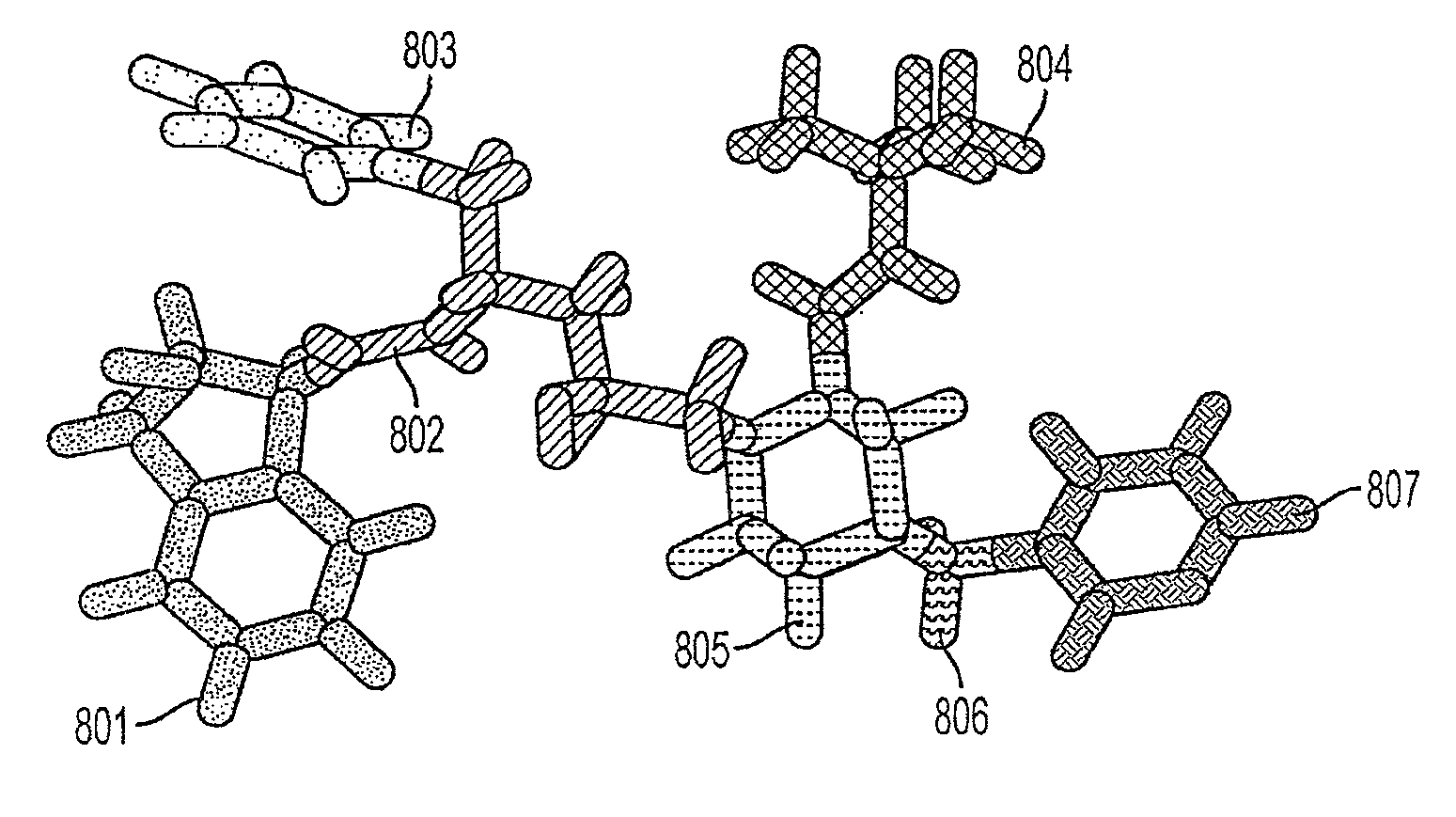Computer Aided Ligand-Based and Receptor-Based Drug Design Utilizing Molecular Shape and Electrostatic Complementarity
a computer-aided ligand and receptor technology, applied in the field of computer-aided molecule design, can solve the problems of limited success of methods, and inability to accurately describe the shape of molecules or receptors
- Summary
- Abstract
- Description
- Claims
- Application Information
AI Technical Summary
Benefits of technology
Problems solved by technology
Method used
Image
Examples
example 1
[0116]The shape signatures method was applied to the Tripos fragment database, a diverse collection of small molecules including heterocycles, carbohydrates, amino acids and nucleotides, which is supplied as a standard component of the SYBYL™ (computer program for modeling) molecular modeling package. This database was especially useful for initial tests given its small size and its incorporation of multiple representatives of each family of compound (ensuring that a given query from the database will usually have several potential matches). Very small fragments were removed from the database at the start, and also some perfectly linear molecules (e.g. allene) which were not handled well by the SMART surface algorithm. This left a total of 235 compounds. Dummy atoms were removed from the amino acids in the database and the resulting empty valences filled with hydrogens. The sidechains of glutamic acid, aspartic acid, lysine, and arginine were modified to correspond to the ionized fo...
example 2
[0123]The National Cancer Institute (“NCI”) compound database as bundled with the SYBYL™ (computer program for modeling) UNITY tools was used as a source of molecules for creation of a shape signatures database with 1D shape signatures based on ray-trace segment length and MEP-based 2D shape signatures. The starting database was screened for all compounds with molecular weight less than 800 Da, yielding 113,826 molecules. Gasteiger charges were computed for all of the molecules in the resulting working set. 1D shape signatures and MEP-based 2D shape signatures were computed for all the compounds, using a sixteen-processor SCYLD BEOWULF™ (operating system permitting clustering of stand-alone computers) cluster. Each processor was simply allotted a fraction of the molecules to be analyzed, and there was no need to employ the use of parallel code. 50,000 reflections were generated in the ray-trace for each compound, and segment culling was employed, as described above. Of the compounds...
example 3
[0124]All of the 1D shape signatures and 2D shape signatures (50,000 reflections per signature) generated in Example 1 were used as queries against the NCI shape signatures database generated in Example 2. The best 50 hits for each query were collected, Searches were carried out using 1D and 2D shape signatures, along with either L1 or R1 metrics (Equations. 1-2, and 3-4 respectively) for a total of four searches. Six query compounds, comprising a set that is both structurally diverse and biologically interesting, were selected for detailed examination.
[0125]A special concern when comparing a query against a large database is the distribution of scores. To be useful, a search method must exhibit a high degree of selectivity, so that truly interesting hits have scores that differ markedly from the mean. In other words, it should be possible to identify a reasonable cutoff score which can be applied to extract a relatively small and meaningful set of hits from a diverse target databas...
PUM
 Login to View More
Login to View More Abstract
Description
Claims
Application Information
 Login to View More
Login to View More - R&D
- Intellectual Property
- Life Sciences
- Materials
- Tech Scout
- Unparalleled Data Quality
- Higher Quality Content
- 60% Fewer Hallucinations
Browse by: Latest US Patents, China's latest patents, Technical Efficacy Thesaurus, Application Domain, Technology Topic, Popular Technical Reports.
© 2025 PatSnap. All rights reserved.Legal|Privacy policy|Modern Slavery Act Transparency Statement|Sitemap|About US| Contact US: help@patsnap.com



